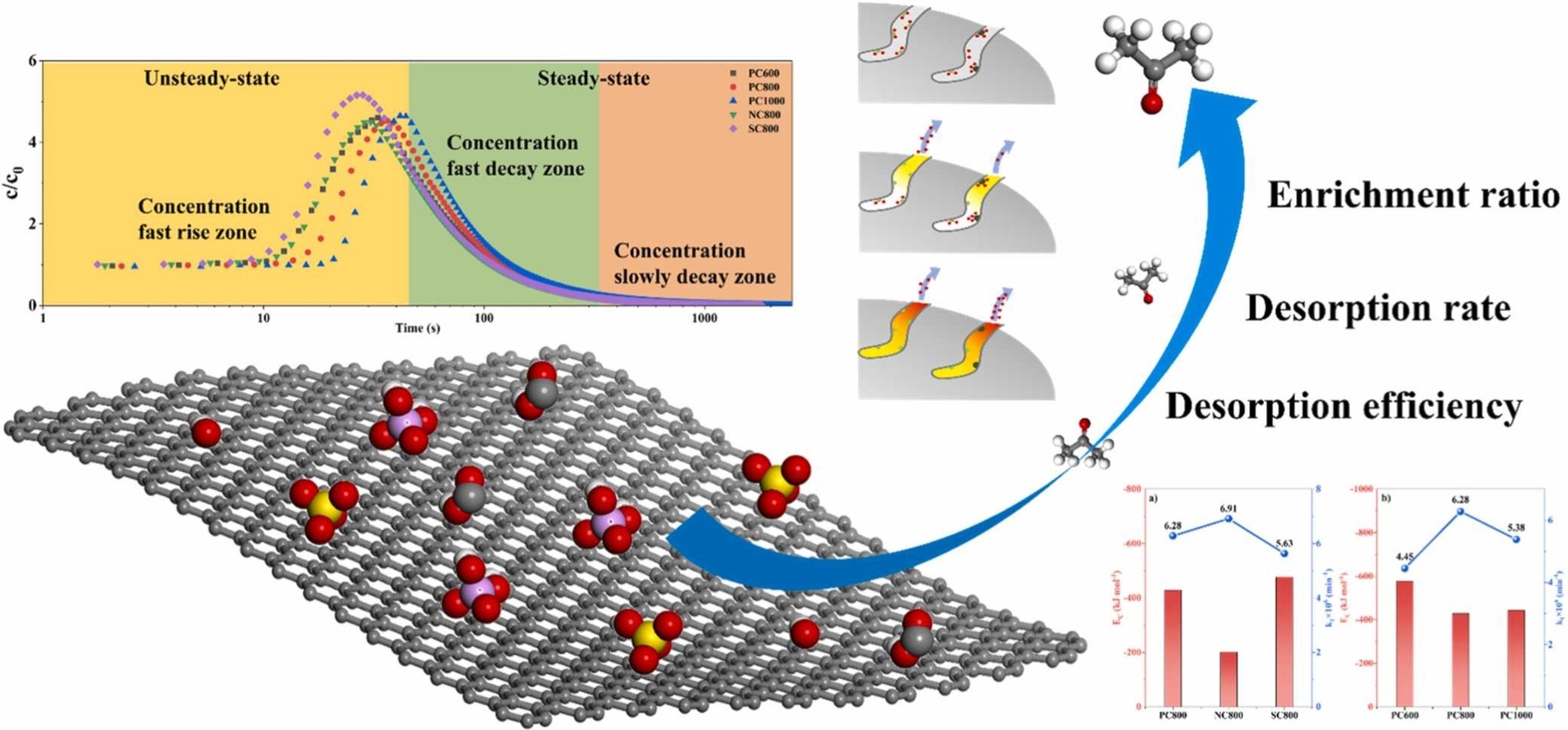
DOI number:10.1016/j.jece.2024.113065
Affiliation of Author(s):中南大学
Journal:Journal of Environmental Chemical Engineering
Key Words:Acetone; Activated carbon; Desorption; Kinetics; Volatile organic compounds
Abstract:As a widely used industrial material, the recovery of volatile organic compounds (VOCs) has great economic value and environmental significance. Improving the desorption performance of modified activated carbon in treating volatile organic compounds emissions is the key to the utilization of adsorbent and the recovery of adsorbate. In this study, five kinds of activated carbons and acetone were selected for orthogonal experiments to analyze the effect of multi-factors on the performances of major concern in engineering. The desorption process was divided into three zones, concentration fast rise zone, concentration fast decay zone and concentration slow decay zone, and quantitively evaluated for each zone. The results show that the enrichment ratio of SC800 is the highest in these sample, can reach 5.16, which is mainly affected by the chemical functional group with the highest adsorption energy, and is negatively correlated with the specific surface area. Combined the kinetic analysis and the quantitative evaluation of the total effects of chemical functional groups, the desorption rates are mainly related to the adsorbent surface saturation in the concentration fast decay zone and the total chemical effect in the concentration slow decay zone. In addition, the PC500 has the highest desorption efficiency of 69 %, which can be measured by the desorption activation energy.
Indexed by:Journal paper
Document Code:113065
Volume:12
Issue:3
ISSN No.:22133437
Translation or Not:no
Date of Publication:2024-06-30
Included Journals:SCI
Links to published journals:https://www.sciencedirect.com/science/article/pii/S2213343724011953?via%3Dihub
